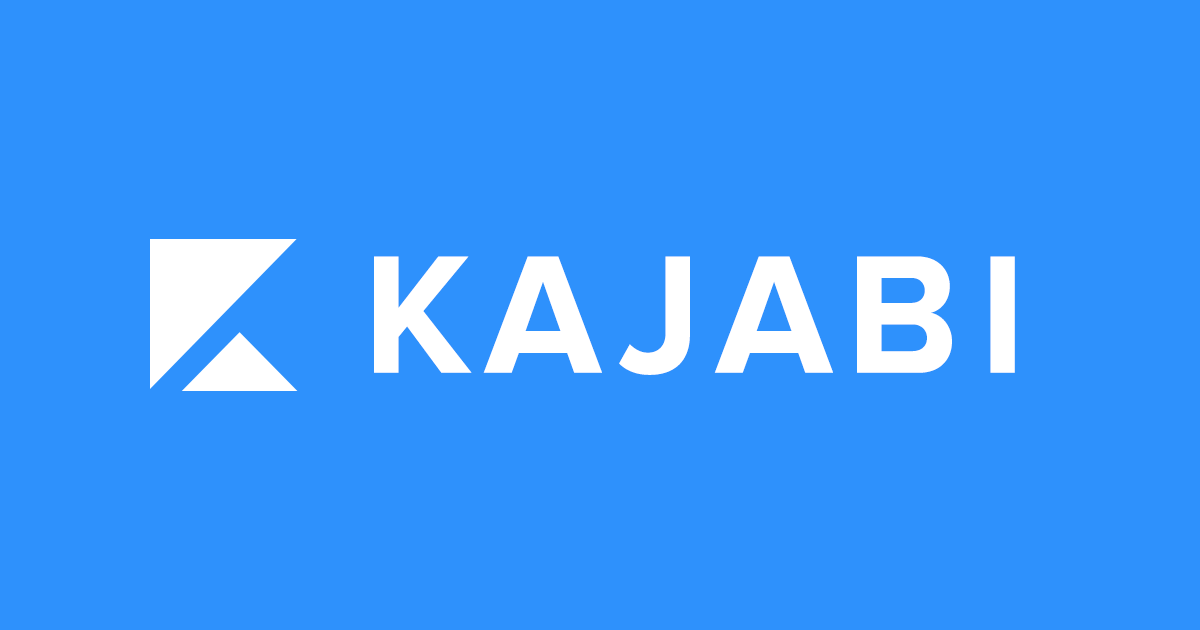Hundreds of learning management system (LMS) platforms come with various essential features that can be utilized when you write content that is meaningful. While there could be a lot of websites that allow you to make use of advanced marketing tools to promote the courses you offer to your intended audience, others may not have most of the features. While some provide easy-to-use tools to build courses, there’ll also be few that may offer editing features that are so complicated that it turns off its users.
Within the sea of online course platforms, there are a few that offer not just a simple editing interface, but also an array of marketing and sales functions. In addition to that, they also provide you with nearly all you can think of such as 24/7 assistance and training materials to top-quality analytics. All-in-one platforms for courses allow you to go beyond the limits of your abilities One of them which can provide this is Kajabi.

A Quick Look: How do you define Kajabi? Thinkific Versus Kajabi
Kajabi can be described as an online service that lets you develop and market your courses to an customers. It is marketed as a complete service, Kajabi provides edupreneurs from all aspects of their lives with the most efficient and necessary features that will not just create a professional website for your courses but let them grow to new heights. Kajabi has been critically acclaimed and is regarded as one of the most effective online learning platforms, with an overwhelmingly positive score of 4.6 out of five on Trustpilot.
What makes Kajabi so well-liked and appreciated among its users? It’s true that there are many factors that make this platform very convenient for everyone to utilize. It’s first and foremost the ease of use. From course creation all the way to marketing the majority of Kajabi’s features can be digestible even for those who are new in the world of online courses. A majority of them are advanced, giving instructors an edge over others. Lastly this allows students such as you manage and build an online course without the need to look elsewhere in case something is missing. Kajabi offers all the tools anyone may need and is a true testament its ‘one stop shop label.
What Can It Do? Do?
There are numerous options that Kajabi allows you to do as an all-in-one e-course solution. We’ve put together a list in bullets of the key characteristics that you might want to keep an eye on when you’re thinking about it. In essence, Kajabi allows you:
- Create engaging and interactive classes using a range of tools for customizing such as media files, templates that you can choose depending on your preferences;
- Create a visually appealing website to house your course contents and products, as well as a blog where you can keep your students informed about the latest developments;
- Make the most of the landing page, checkout pages and other effective methods to increase your earnings, expand your reach to the limit and increase conversion rates;
- Choose how you wish to bill your courses and other services for your students, whether it’s one-time payments or a subscription for a month;
- Design and build effective sales funnels without any problems through the use funnel templates and funnel blueprints;
- Make use of its internal marketing and analytics suite with email marketing and CRM as well as automated tools.
- Set up and manage your affiliate links; and
- Explore a variety of customer service, community and training tools and features, including the Kajabi University feature.
The Big Names Who Have Utilized Kajabi
Kajabi is trusted and used by more than 16,000 companies and big-name personalities. It’s the choice of many of the most well-known people who come from different sectors, including online marketing expert Amy Porterfield, best-selling book author Mel Abraham, personal development coach Brendon Burchard and fitness expert entrepreneur Jenine Dilts Bayman, and actor-coach Ross Grant.
Kajabi is home to thousands on thousands of courses which are accessed and explored by more than 35 million students all over the world. In the last the time this article was written, Kajabi has generated over $650 million in sales since its establishment in 2010.
Kajabi’s Pricing Strategies
The three pricing plans that Kajabi provides are different than other online course-making services in that they’re more expensive. With monthly costs that begin at as low as $119 it’s no wonder why it can be a hindrance for some who might be interested in giving it a try. With the abundance of features that are included into each plan, the pricing is logically reasonable.
Kajabi’s pricing plans start with the Basic plan priced at $149 per month or $119/month for billing annually. With this tier, you can create three products, reach up to 1000 active users, as well as create websites that you are able to customize with tools fully provided by the platform. Included are unlimited pages for landing pages, unlimited marketing emails, and unlimited access to useful resources, such as one-on-one customer service and Kajabi University.

> > Click Here to Check Out Kajabi < <
Apart from The Basic Plan, there is the Growth plan which is the platform’s most popular offer with a monthly cost of $199 or $159/mo when paid annually, and the Pro plan at $399 monthly or $319/mo yearly, which is filled with every feature you’d like when making and selling your courses. Kajabi is currently not offering an option to pay for the plan. But a 14-day no-cost trial is available on each of the three plans. A trial extension that runs for up to 30 days available on selected blogs. If you’re looking to test the waters to determine if Kajabi is the right fit for you, then the brief trial offer is the best option.
Kajabi: The Good and the Bad
The Pros – What We Love About Kajabi
- The built-in marketing suite. Kajabi’s marketing suite in-house of tools, including automated e-mail marketing, and automation are designed for businesses, so it isn’t necessary to integrate with any other third-party service for this!
- The software that creates sales funnels. Another of the most popular features on the platform, the sales Pipeline Builder lets you make use of well-tested and understood blueprint templates – no need to get too complicated!
- Customization without limits. From designing professional-looking course websites all the way to the custom name, Kajabi lets you customize according to your own preferences – and even build your brand from scratch.
- The user-friendly and simple site as well as course editor. Making content with the website and course builder software has never been this easy and quick, as it takes less effort and time to complete the task.
- Unlimited integrations. Aside from native integrations with the ten marketing, e-commerce and analytics tools, connecting to Zapier’s app lets you to look and select from more than a thousand non-native platforms that can improve your effectiveness.
- Making lasting connections with your students and instructors. Kajabi’s Community feature lets you interact with students in any of your courses. It also lets you make connections, network and celebrate with a multitude of teachers in the same position as you.
The Cons – Things We Don’t Like
- The pricey pricing plans. The three plans offered by Kajabi are higher than the average monthly rate that other providers offer. There’s no free option available either.
- There are no built-in tools for issuance of certificates. You might need to connect to a third-party certificate application if you intend to design custom-made certificates of different kinds.
- Insufficient tools for instructor-student engagement. We aren’t happy with the absence of some particular features, including proper discussion forums and the ability to randomly assign quizzes or assignments. Thinkific Versus Kajabi
An Overview of the Kajabi Features
User-Friendliness and Experience
One thing that we like the most about Kajabi is the surprisingly easy user experience. For one, most of the platform’s User Interface (UI) is organized. If you look at the dashboard menu, you may find that all the features are arranged into five main sections: Website, Products, Sales, Marketing and People. The design of the menu is clear and free of confusion, as certain elements that are associated with the specific section can be collapsed. The UI style is very uniform and reflects Kajabi’s “all-in-one” trademark. You get to create a landing page, modify your course, and even engage with other instructors on one site.
There is a search assistant tool that can be useful anytime you’re looking for something that is hard to find. The Kajabi Assistant is located at the top of the dashboard in the form of a search bar it allows you to search for tools and items within the site by entering the search terms. As previously mentioned that both the Kajabi website builder and course builder sections can be moved and dropped, making the process simpler without having to know how to navigate it. Kajabi is a more streamlined learning curve than a couple of its contemporaries. It also supports multiple languages other than English if you wish to share your content with broader viewers.

> > Click Here to Check Out Kajabi < <
Course Development and Engagement
Product Blueprints
When you go through Kajabi’s course design feature, you will quickly come across a variety of course or product templates, or what the platform calls it blueprints. Each blueprint for a product differs in terms of structure and design and can be customized to fit any instructor’s needs.
The blueprints listed are Mini Courses, Online Courses and Drip Courses. Mini Courses are short-form quick courses which are generally designed as a way to build brand value, while Online Courses are full-version courses with a full content structure that are designed to provide the “world-class” learning experience. Drip courses, on other hand, are courses which are planned over the course of a specified number of days or weeks. Also called Evergreen Training courses, it’s an easier method to distribute your content when you as well as your students are occupied with other activities.
Kajabi may be known by many as a renowned premium course maker. However, in addition to the kinds of courses offered, the blueprints let you make a membership site that allows your customers to access exclusive content and a coach session that spans 12 weeks. There’s also a blank template where you can create a course or product completely from the ground up!
Categories Posts, Categories, as well as Content Uploads
If you continue to look into the course builder, you’ll notice an outline of sections and lessons that were automatically added if you choose any of the course blueprints. In the case of Kajabi, these segments and classes are referred to as post categories as well as category, and vice versa. Posts are the places where you put in different types of content, including text, video images, and text, while the categories act as folders in which the posts are kept.
It is also possible to include subcategories of posts under the same category, if you wish to arrange your content in a flexible way. You may also drag and rearrange the outline. Kajabi accepts a wide variety of text and media files to be added to your posts, including MOV and MP4 files, MP3 and WAV files, PDFs and Word documents. You can upload any of them from your computer folders or via cloud-based file sharing platforms such as Google Drive and Dropbox. You can also copy and paste existing URLs of your videos to your blog posts!
Like several other platform for making courses, Kajabi allows you to utilize the bulk upload feature. Like the name implies it allows you to upload all the files you have uploaded to your courses in one page. This can be useful especially when you’re performing other tasks.
Course Player Templates
Kajabi provides a selection of over 10 themes for courses. Contrary to other LMS platforms that only allow you to be given the option to choose the theme you want to use, Kajabi lets you have the choice of selecting several themes to suit different products. Similar to the course outline builder, it’s relatively easy to customize any of the themes to fit your style. It is possible to incorporate specifics that represent your brand, such as the logo or images as well as font designs , into your course player to cultivate a personal touch. Thinkific Versus Kajabi
Questions and student interactions
Kajabi includes a quiz function called Assessments. It allows you to design and create assignments and quizzes and add them as part of your class. Assessments are an effective method of determining if your students learned something from the curriculum you’ve given them. With the assessments feature, you get to select from three main question types: multiple-choice, paragraph-style, and multiple-selection. You can also set an assessment score that will encourage your students to engage with your material more.
Apart from that aside from that, it is also important to note that the LMS site has also made strides in creating areas for teachers and students to interact. Through the Community feature, your learners are given access to comment and interact with any of your courses through their dashboards. It is possible to write your blog posts for discussion with the rest of them your lessons from the past as well as your future content. The community feature can be accessed either as a stand-alone product or as an element of membership.

> > Click Here to Check Out Kajabi < <
Website Design and Customization
Why share your course contents with your domain name as well as WordPress web site when Kajabi offers the platform and tools to create one within the platform? Kajabi provides unlimited web hosting for three pricing plans. The best part is that you’re assured of instant safety and security with the automatic SSL certification, as well as a team to help maintain your website.
You’re also given the liberty to modify your domain as well as choose from a wide array of unique, professional themes, which you can modify to your hearts content! The possibilities don’t end there: If you’re an expert edupreneur and are a member of the Growth plan or higher, you get to download custom-designed themes designed to fit your ever-expanding needs and also eliminate the Kajabi logos and substitute it with your custom-designed theme!
Page Builder
Like the course builder that we’ve discussed earlier, the page builder from Kajabi allows you to alter any of the themes on the website using a variety of easy-to-use and user-friendly editing tools. Upon further exploration you’ll be presented with sets of blocks that can be customized and sections. They’re similar to post categories, and categories we discussed when we’ve talked about how to build courses. Blocks are the elements that compose the content of the website including media files, text or clickable icons. Sections on the other hand are formed by a variety of well-arranged blocks.
There are over 40 preset sections templates that can be picked from the dashboard of the page builder. Since we’re all connected to our phones and tiny tablets it’s logical for Kajabi to make your website automatically adjust to a mobile layout. It’s even possible to go the extra mile by picking which site element you wish for your member learners to view. With all the tools you need to make your site look however you want it to look, Kajabi’s page builder is not just extremely flexible, but also quick to handle.
Blogging and Other Web-based Features
Other LMS platforms might not offer this, but Kajabi allows you to make a section of your website specifically for your blog. There, you can share comments and updates on the content of your course. If you’re looking to make the most out the Kajabi-made website, the service provides you the opportunity to publish your content without restriction. You can get started with your blog posts by creating one using an editor for text. You may incorporate SEO elements if you wish to reach a larger audience and organize your blog posts into various categories or even change the way you would like your blog’s entire section to appear.
Kajabi’s built-in blogging capabilities may not be as on with WordPress or Blogspot, but it has enough tools to allow it to be managed. You can also create podcasts to promote on your site. You can upload audio recordings of your podcasts to be hosted on the website and distributed to the major podcasting platforms, such as the Apple Podcasts platform and Spotify. When uploading a podcast episode there are two options: either release it as a public podcast for free , or create an exclusive private podcast which only your subscribers can get access to. Thinkific Versus Kajabi

> > Click Here to Check Out Kajabi < <
Marketing and Sales and Marketing
Part of what makes Kajabi so popular among edupreneurs is its array of sales and marketing tools that are supremely user-friendly and easy for even those who aren’t marketing experts to make use of!
Email Marketing and Affiliate Marketing
A big draw among the masses, Kajabi’s built-in E-mail marketing functions allow users to send out e-mails related to your course and websites to your members who are subscribed students while seated on the platform. You might be surprised by the fact that it goes beyond simply send emails. With the aid with Kajabi Automations, you get to build automated sequences of emails that are triggered by different kinds of user actions. For example, when your student successfully logs into one of your classes after checking out, a welcome message will be automatically delivered to their inbox. If the course performs poorly then an upsell message is sent to suggest an improvement Thinkific Versus Kajabi
You are able to create as many emails to your campaign as you wish and schedule each of them in accordance to your preference. You can choose the members you want to receive those messages. E-mail management has never been more extensive and yet simple to manage. In contrast to other LMS sites, Kajabi already provides you with e-mail marketing tools that wouldn’t have to worry about connecting to other third-party platforms in order to make it work.
In addition, Kajabi also has an affiliate marketing option which allows you to designate certain members of yours as affiliates who can help advertise your website on behalf of your company. In addition to paying them a commission and monitoring their performance to determine how well they contribute to increasing your conversion and click rates. Thinkific Versus Kajabi
Pipeline Builder
Another of Kajabi’s top features is one of the best features is Pipeline Builder, where you get to create specialized marketing funnels that do not have any overly complicated problems. While other platforms offer similar features that require more time and effort, the Pipeline Builder is designed to be extremely simple and quick that even those who aren’t experts can benefit from it. This amazing feature lets you select from a set of pre-made funnel designs or pipeline blueprints. They include:
- Freebies – to be used whenever you’d like to offer an offer as a lead magnet to increase your list
- Sales Page OVO – to use whenever you want to persuade your customers to purchase your product through the sales page
- Product Launch OVO is a great option for whenever you’re launching a course or another product
- Zoom Webinar OVO is a great option for occasions when you need to advertise your product via web workshops
- Free Book OVO – to use whenever you want to promote your content with an online book for free download.
- Coaching Campaign OVO is for when you’re trying to promote your classes through the use of coaching sessions
- Blank blueprint – for whenever you want to build your sales funnel from the ground
Once you select from any of the pipeline blueprints Kajabi will automatically generate pages and emails you’ll have to put together to make an efficient sales funnel. You may customize however you would like your sales funnel to look to your customers. You may even change the design of your landing and checkout pages, for example changing the design to a different theme There is a library with more than 40 pages templates you can pick from.
Optional Payment Options and Price
Kajabi lets you integrate seamlessly with payment gateways like Stripe and PayPal so that your students can get to choose one of them to pay for your classes. Stripe is the most popular payment option that accepts credit and debit card transactions, as well as select e-wallet providers all over the world. PayPal, on the other side, is an alternative for subscribers and multi-payment plans. There aren’t any fees for transactions on the part of Kajabi since all the money you earn are immediately sent to your bank account.
When it comes to price options for Kajabi, it offers an array of options for you of options to select from. You can either charge your students for your products at different dates (one-time or subscription and several payments) or hand them out for free. You even have the chance to select if you’re going to charge a set amount for a single item or for a variety of items, and set specific dates that your members can access within a specific timeframe. You can also create coupons to further motivate your audience to purchase all of your products. Thinkific Versus Kajabi

> > Click Here to Check Out Kajabi < <
Integrations with Third-Party Services
Kajabi is a host of built-in features to help you develop and promote your courses However, you have the option to connect to third-party applications to provide more functions. The platform currently supports 10 native integrations, which include the well-known analytics service Google Analytics and app automation service Zapier. Zapier comes in very handy as it helps establish connections with hundreds more third-party applications and tools, ranging that range from e-commerce to user experiences.
Training and Support for Customers
In terms of customer support, Kajabi has a bigger advantage over other platforms because it’s one of the few course creation platforms which provide 24/7 live chat assistance. In contrast to other similar platforms the Kajabi customer support team is available to help you whenever you encounter difficulties creating an online course or website, in addition to other important issues, anytime and from anywhere. It’s crucial to note that this 24 hour service is only available to instructors that are on the Growth plan up to for Basic users live chat is available for certain times and times during the day. However, Kajabi’s method of customer service has been well-received by many of the instructors who use it to create useful educational content. Thinkific Versus Kajabi
In terms of training tools, Kajabi offers you a variety of ways to access resources that you can master and then become proficient with. Kajabi Hero University Kajabi Hero University is packed with tutorials, classes and educational content specifically targeted at educators and edupreneurs, to help them get started or increase their standing in the course creation world. You’re also invited to every day Q&A webinars that feature prominent experts from various disciplines as guest speakers, and If you’re in search of more advice and tricks assistance, the help section will be there to help you in the right direction. Apart from the platform’s Hero University, there is an additional Kajabi Hero Rewards program in which course creators can earn numerous sweet rewards when they reach their objectives.
What is the other thing that is missing from Kajabi?
Kajabi might be a fantastic all-in-one platform to develop and sell your course material However, we need to look at a few crucial aspects that are not being addressed. Most of them would be extremely useful to enhance the user experience. These are some of the things we’d like to see included in Kajabi’s system soon:
- Built-in tools to issue certificates and credentials. While some provide this service instructors who utilize Kajabi will often require connecting to third-party software that specialize in issuing certificates, like Accredible.
- More diversity in question types. While we may appreciate the platform’s handling of assessments within courses, we’d like for the absence of different types of questions as well as randomization of these types – to be addressed soonest.
- Additional payment options. As of the moment only transactions made through Stripe as well as PayPal will be accepted. In addition, we don’t appreciate how there are limitations too.
- An API key that is public. This could be useful for creating custom integrations like having your students who have subscribed to your service sign in using the single sign-in option in other apps.
Alternatives to Kajabi
Kajabi may have essentially most of the features any aspiring Edupreneur would ever want to have. But due to its high price plan, and the lack in features it could turn some people off. If you’re seeking alternatives that have commonalities with Kajabi regarding performance and reliability We’ve provided a list of worthy alternatives that you might want to consider when making your choice. Thinkific Versus Kajabi
- New Zenler is an online course platform that provides all-in-one solutions similar to Kajabi. The only major difference is the cost beginning at just $67 per month, you can create unlimited courses and sell to your audience of choice without ever having to worry about the cost!
- Podia doesn’t just claim to be a creator-friendly platform. It’s also extremely simple to use, much easier than Kajabi! While you get to benefit from marketing features, it’s much lighter than other. With the extremely affordable price range we can understand the way Podia will appeal to DIY entrepreneurs getting into the business.
- While Kajabi isn’t a reputable platform and lacks more advanced features for quizzes, Thinkific makes up for these features. With a price that is affordable for beginners, it sure does offer greater features that the other has as well as live-taught courses as well as an integrated app integration store.
- Teachable is identical to Thinkific in terms of how it works. However, we must appreciate the way that Teachable can integrate additional payment options as it accepts Google Pay and Apple Pay, two gateway services Kajabi doesn’t have. Additionally, it allows one-on-one coaching and other core features.
Conclusion
Overall, Kajabi successfully knocks it out of the park for offering a wide range of options that most entrepreneurs use. It sure does offer the essentials anyone must need, from intuitive functions needed to create a professional-looking website to the stellar built-in marketing suite with the addition of simple sales funnel blueprints and efficient marketing tools for e-mails.
There may be a few tools missing for example, the issue of certificates, in particular. Plus with a steep cost, it might not be the wise option for those with a tight budget. But we do understand that while Kajabi is great as an all-in one solution for course creation, it will always have limitations. However, that doesn’t stop it however, from becoming a popular choice among established creators and businesses!
If you’re still searching for an LMS that can provide everything you require in one place, Kajabi is something you should strongly consider.
FAQ Thinkific Versus Kajabi
What is the meaning of Kajabi mean?
The term “Kajabi” is derived from a word with Islamic as well as Arabic origin which means “to take flight.”
Can I sell physical products on Kajabi?
Yes! In addition to the normal classes, you can also sell physical products on Kajabi. You can even integrate with Shopify to create a fully-functioning e-commerce shop on the platform!
Regarding marketing via e-mail, is it possible that Kajabi could take over MailChimp?
Since Kajabi already comes with e-mail marketing tools built within the platform, it’s natural that it’s enough to replace third-party applications like MailChimp. However, if you do wish to utilize it, Kajabi still allows you to integrate it with other apps as well.
Is Kajabi mobile-friendly?
Yes! Kajabi also has an app that can be downloaded on mobile to ensure that you and your subscribers have access to all course materials even when traveling. Thinkific Versus Kajabi

